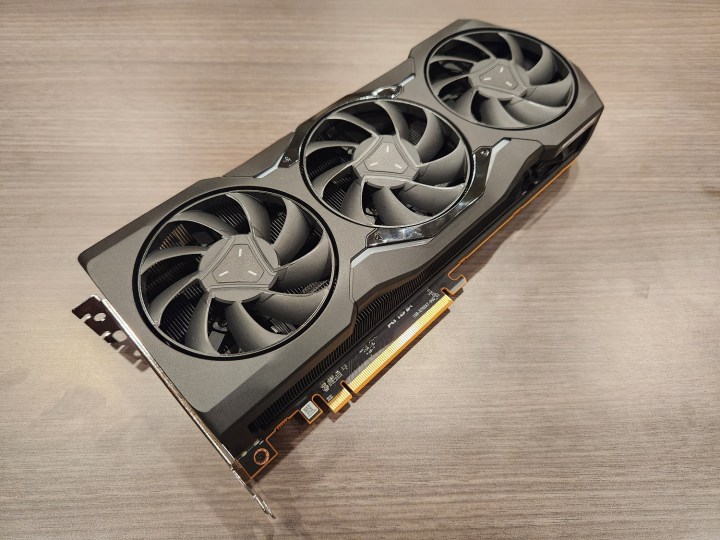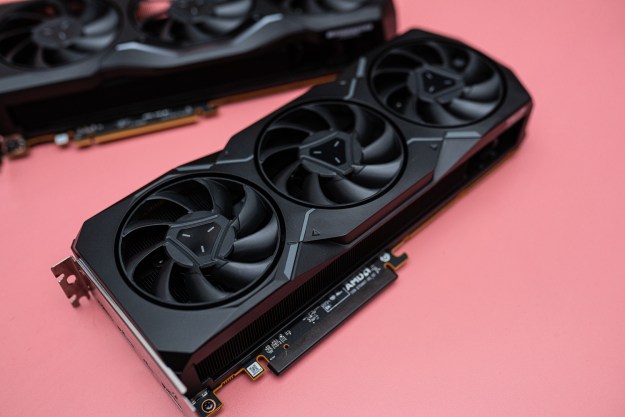
AMD has made some of the best graphics cards in the last few years, and yet its gaming GPU market still appears to be fairly niche when compared to Nvidia’s gigantic share. This sentiment is backed by AMD’s most recent earnings call, which revealed that its gaming revenue is down by a staggering 48% year-over-year.
Things have been looking kind of grim ever since rumors started spreading that AMD may be giving up on the high-end portion of the GPU market. There have been whispers that AMD may have had a perfectly viable high-end graphics card that it decided not to launch, instead focusing on the mainstream segment. The earnings call gives some context to these rumors.
As reported by PC Gamer, AMD’s overall gaming revenue in the first quarter of 2024 dropped by 48% compared to the same time period in 2023, and by 33% compared to the previous quarter. Jean Hu, AMD’s CFO, cites a decrease in Radeon GPU sales as one of the reasons why its gaming department is performing so poorly. Even though AMD has the upcoming RDNA 4 lineup coming out this year, it doesn’t seem to expect things to get better.
“Year over year, we expect our data center and client segment revenue to be up significantly, driven by the strength of our product portfolio; [and we expect] the embedded and gaming segment revenue to decline by a significant double-digit percentage,” Hu said. “We actually think the second half will be lower than the first half. […] And at the same time, gaming’s gross margin is lower than our company average. So overall, it will help the mix on the gross margin side.”
Seeing the decline in the volume of AMD’s gaming business as a good thing makes sense — AMD knows full well that the real revenue lies in datacenters and in AI. However, for gamers who prefer AMD, this isn’t good news.

We’ve been on a bit of a roller coaster when it comes to the popularity of AMD GPUs. Just two months ago, a report from Jon Peddie Research showed that AMD’s discrete graphics card market was doing well as of the final quarter of last year. AMD saw a significant increase in shipments, with a 17% rise between the third and fourth quarters of 2023, and a massive 117% year-over-year gain from 2022 to 2023. AMD even managed to climb up to a 19% market share.
Chances are that we may not see this kind of success when 2024 comes to a close. RDNA 4, once it comes out — we still don’t know when, but reports estimate the end of the third quarter or the beginning of the fourth — may not make a big enough dent to save AMD’s gaming GPU revenue for the year. The overall gaming segment may fare better, as AMD is also expected to release Zen 5 processors, so it’ll have two new product lines out in 2024.
Despite the drastic increase in shipments (which, let’s remember, don’t equal sales), AMD GPUs aren’t that popular among gamers — at least not if the Steam Hardware Survey is to be believed. While it only accounts for a small for a small portion of the PC gaming market, it’s hard to ignore the fact that it’s almost entirely dominated by Nvidia GPUs. In the April 2024 survey, AMD’s top entry is at No. 16 with its integrated Radeon graphics. The first discrete GPU is the aging RX 580 at No. 31, followed by the RX 6600 and the RX 6700 XT at 37 and 38, respectively. The only current-gen GPU to make the ranking is the RX 7900 XTX.
AMD’s gaming revenue might look grim, but it’s probably not as bad as it seems. Consumer products are likely way cheaper to produce, and with a huge profit margin on AMD’s enterprise business, it seems unlikely that AMD will call it quits entirely — but this is just speculation.
Once RDNA 4 GPUs are out, and RDNA 5 becomes more than just a guess, we may get some insight into what AMD is planning to do with its gaming GPUs. For the sake of gamers, let’s hope that it stays — Nvidia could use the competition.
Editors' Recommendations
- Here’s even more proof that AMD’s GPUs are in trouble
- The sad reality of AMD’s next-gen GPUs comes into view
- AMD’s GPUs had a bigger year in 2023 than you might realize
- AMD has a lot to prove this year
- The Nvidia RTX 4080 Super just trounced AMD




